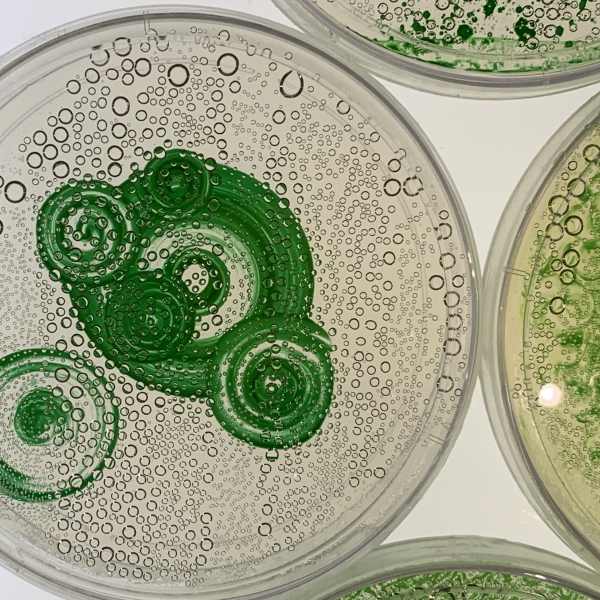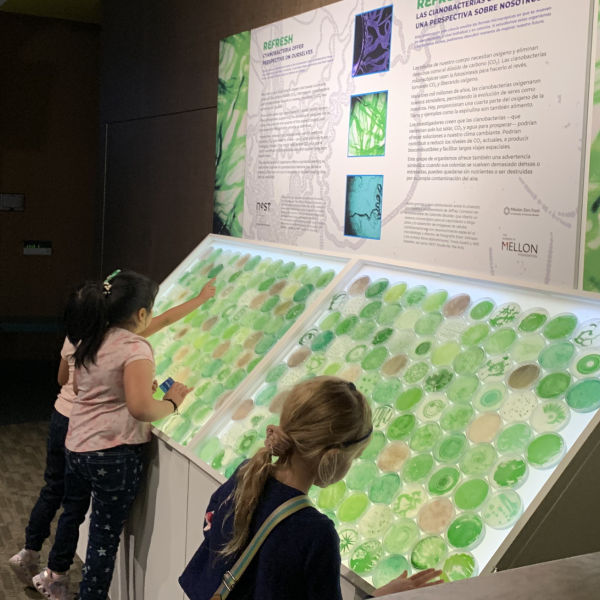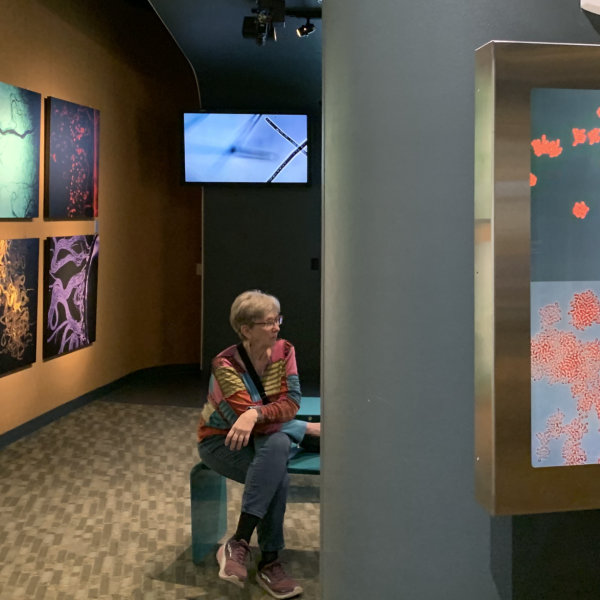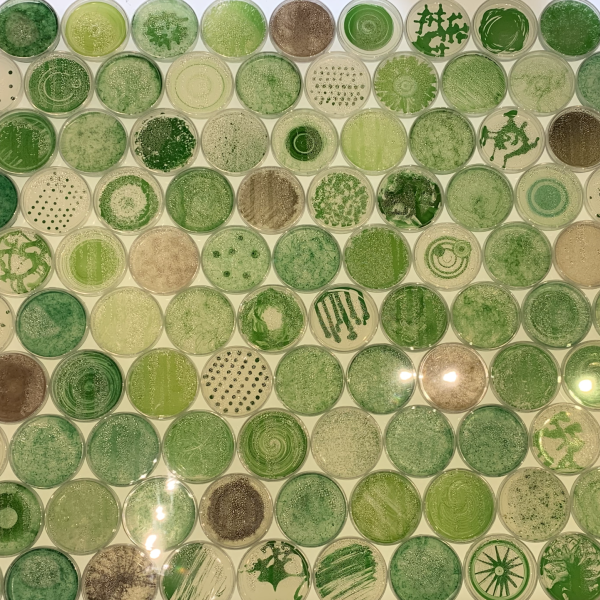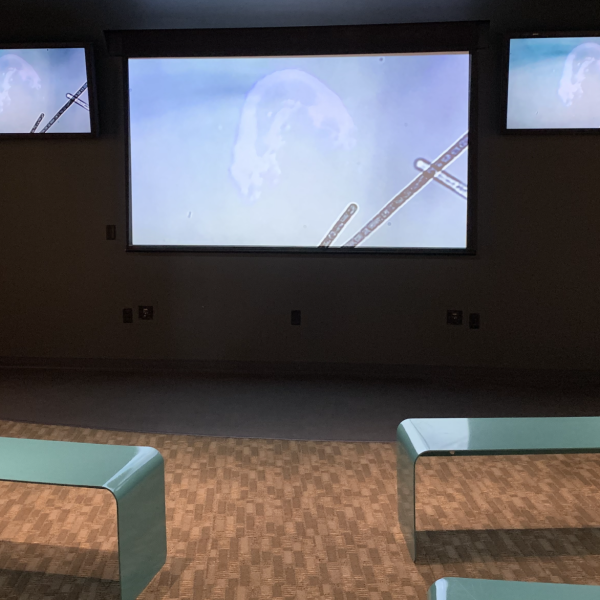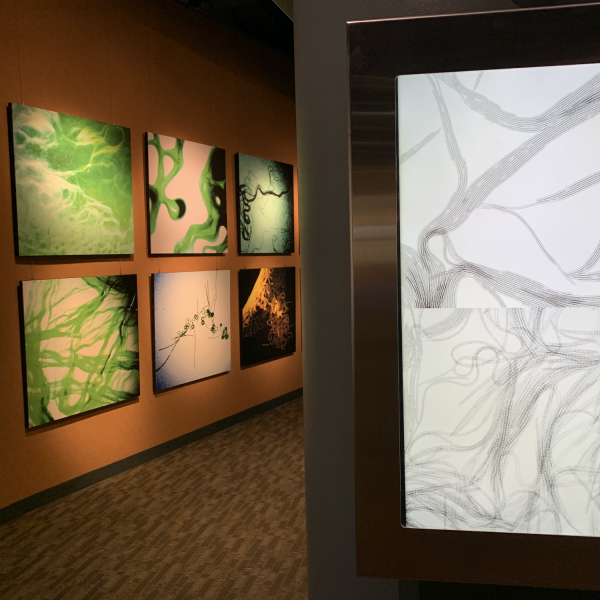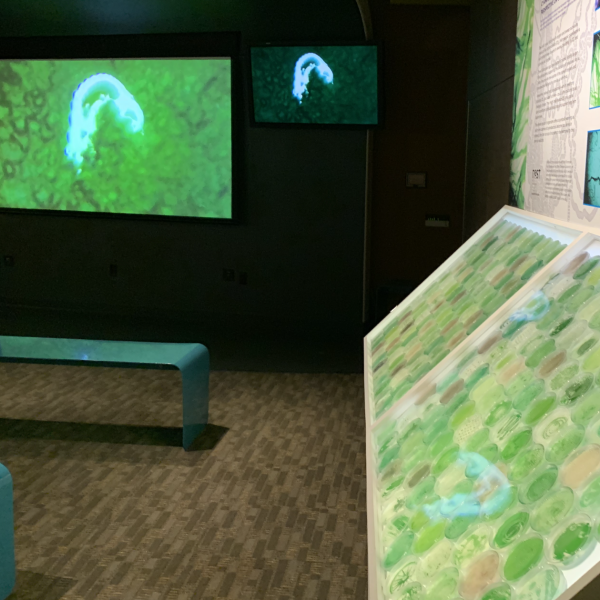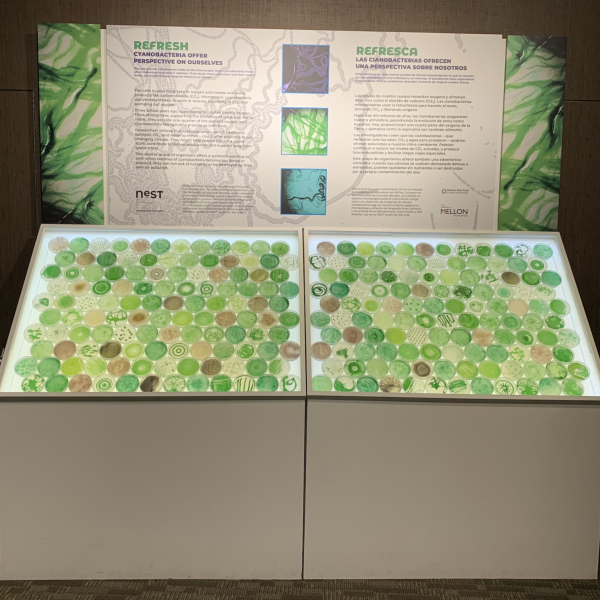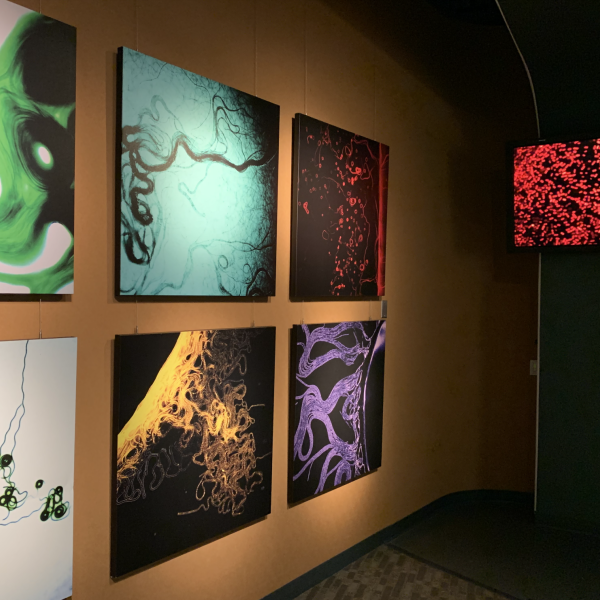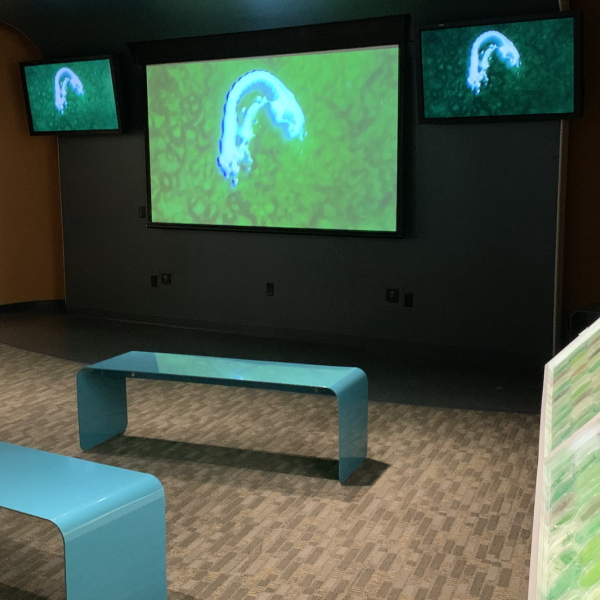Refresh Exhibition
This art-science collaboration looks at the microscopic ways cyanobacteria move, on an individual level and in colonies. If we study these organisms and their varied forms, we might discover ways to improve our future.
On display at the Denver Museum of Nature & Science in the Summit Stage and Expedition Health, March 2022 - Fall 2022
The cells in your body take in oxygen and sweep out waste products like carbon dioxide (CO2). Microscopic cyanobacteria use photosynthesis to work in reverse, breathing in CO2 and pumping out oxygen.
Three billion years ago, cyanobacteria created Earth’s oxygenfilled atmosphere, supporting the evolution of creatures like us. Today, they provide one-quarter of the planet’s oxygen, and cyanobacteria like spirulina provide us with food.
Researchers believe that cyanobacteria —which need only sunlight, CO2, and water to thrive— could offer solutions to our changing climate. They might help reduce CO2 on a grand scale, contribute to biofuel production, and support long-term space travel. This diverse group of organisms offers a symbolic warning as well: when colonies of cyanobacteria become too dense or stressed, they can run out of nutrients or be destroyed by their own air pollution.
Made with the collaborative efforts of filmmaker Erin Espelie and the Jeffrey Cameron Laboratory at the University of Colorado Boulder, which created a customized microscope system specifically tailored for long-term growth and quantitative imaging of cyanobacterial cells; with special thanks to microbiologist and cinematographer Evan Johnson and artists Nima Bahrehmand, Travis Austin, Will Allstetter, as well as NEST Studio for the Arts.
We are indebted to the following colleagues for providing cyanobacteria strains: We thank Dr. Beronda Montgomery for Fremyella, and Dr. Himadri Pakrasi and Dr. Ruanbao Zhou for Anabaena. Isolation of Geitlerinema was performed in collaboration with Dr. Lizzy Trower.
Exhibition Images
Click on the image to enlarge


